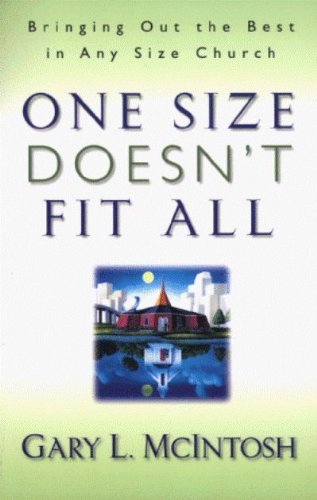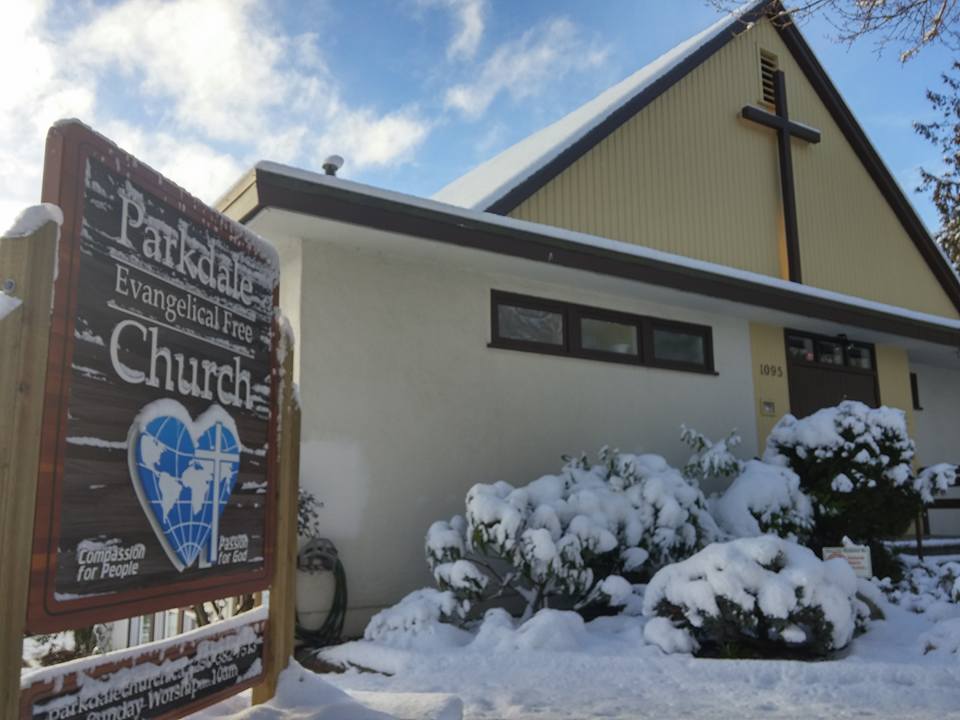Some years ago, as I began shepherding my first church, I ran into some challenges. The church where I was called to pastor was not like the church in which I grew up. My childhood church had programs, leadership teams, and a variety of social sub-groups. My new church was like one, big, extended family, informally led by a few patriarchs and matriarchs. In my old church, novelty was sought after. In my new church, history was valued. Understandably, there were some communication barriers as I sought, along with the church leaders, to discern God’s direction for our way forward. It was during that pastorate that I was given a book called One Size Doesn’t Fit All.
After following God’s call to a new church, one of the first things the elders and I agreed to do was read this book. I hoped that it would help create some common ground between me and them – that it would help us understand where we were as a church, and where we should be going. I wasn’t disappointed.
The book uses a narrative form to express points about the difference between small, medium, and large churches. Each chapter involves a conversation between a young pastor and an older mentor – who offers him advice about how church ministry operates differently at different stages of growth.
Small churches are defined as 15-200 in attendance, and comprise 80% of all North American Churches. Their defining characteristic is that they are small enough to be single-cell: they have one pastor, and everyone can know each other. They grow by attracting people into their warm fellowship, but insist on remaining consistent with the history and culture of the church. Key families provide continuity in leadership, and members value their individual voice in decision-making.
Medium churches are defined as 201-400 in attendance, and comprise 10% of churches. They are described as “stretched cell,” where programs, teams, and committees have been added, but are still connected to a single building and leadership circle. They grow through operating successful programs, which are run by teams and committees that are empowered with authority by the membership. Leadership is transitioning from pastor + congregation to teams, who move beyond history to present needs.
Large churches have more than 400 in attendance, and comprise the remaining 10% of churches. Only 1% of all churches have more than 2000 in attendance. A large church has successfully transitioned to a multi-cell model, involving multiple pastors, services, and/or locations. Growth occurs through word of mouth – the “buzz” created by its increasing size and impact. Leadership becomes more centralized in select, specialized leaders, and is driven by a vision for the future.

Must every church progress from small to large, in order to be successful? No. While growth should always be sought, it can be accommodated through church planting as well as church expansion.
Does growth happen by simply changing church structure, by acting like a larger church? No. The size-descriptions above are descriptive, not prescriptive. Yet, as growth occurs, these structures and modes of operation should follow closely behind. They describe what is necessary to keep a church running optimally and smoothly, in its given size.
Then, how does growth happen? How does a small church become medium? The author identifies certain barriers to growth in small churches, with corresponding solutions:
- A small-church image can become entrenched in its identity. In response, a new sense of purpose must be connected to their identity – As followers of Jesus, what are we called to do?
- Fellowship can become ingrown. In response, new avenues must be opened for outsiders to become insiders: classes, small groups, leadership positions. Ministries run by individuals should transition to being led by teams.
- Evangelism and Programs can become stale. In response, encourage new initiatives, celebrate successes, and raise the profile of activities that align with the renewed sense of purpose and mission. Develop a “star program” that your church can specialize in.
As a church nudges toward medium-size, which issues arise, and how are they dealt with?
- Complexity makes administration challenging. In response, develop a distinct identity and focus as a church. Work on a long-range plan, and improve quality of ministry before quantity.
- Staff, facilities, and finances become stretched. In response, duplicate services and ministries in the same location. Hire more staff, before people begin falling through the cracks.
Clearly, as the book title indicates, there are different challenges and solutions for churches of different sizes. For me, observing my church’s situation, a number of ideas stood out:
- Leaders must be intentional – we would be wise to learn from the past, be grounded in the present, while always looking forward.
- There are different sources of church growth – attractive fellowship, ministry programs, and word of mouth. As the author puts it, “add…divide…multiply.” To some extent, all can happen at any size, but we can play to our strengths.
- When it comes to programs, focus is key – we must identify the gifts and opportunities that God has provided, and respond to His specific leading. We are not called to be everything to everyone.
- For a church to grow, leadership must make room – new leaders must be trained and welcomed. Authority must transfer from individuals to teams, and from an inner circle to a broader group who share common values, mission, and vision.
- It all comes back to our sense of purpose and mission – we are led by Jesus Christ, Who calls us to follow Him, and invite others to do the same.
Did anything mentioned above resonate with you? What have you seen and experienced in church life?

